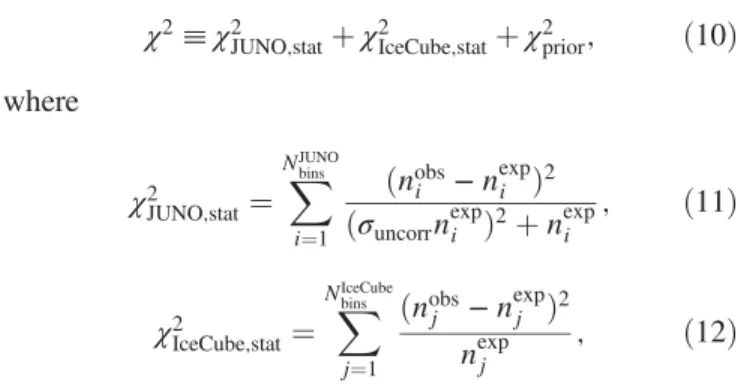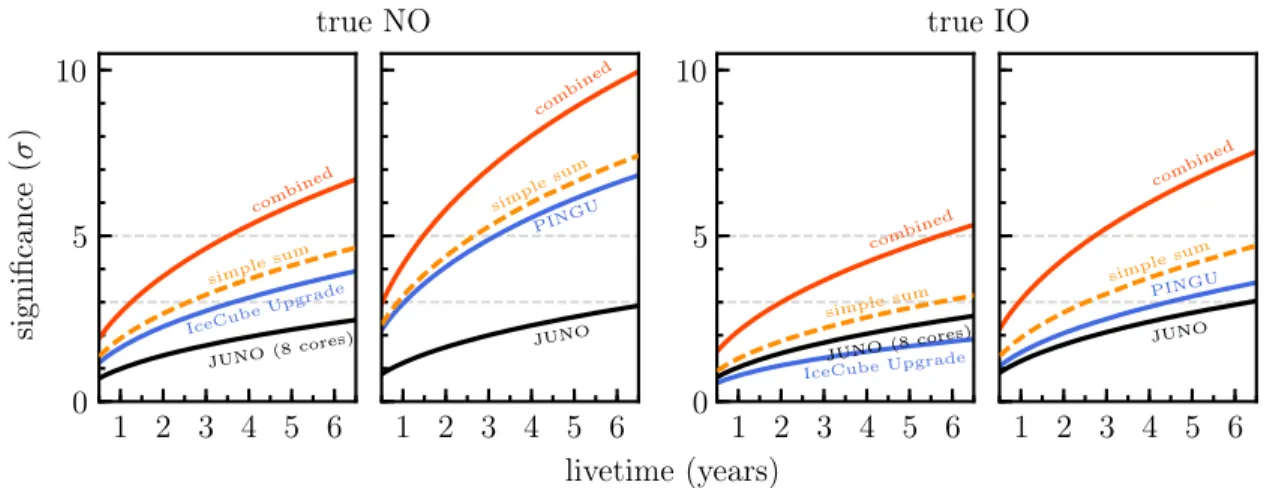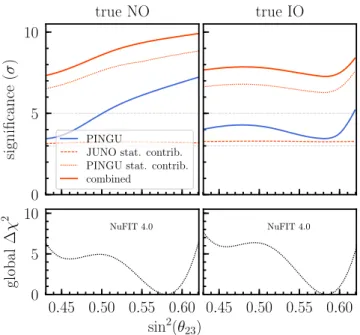Combined sensitivity to the neutrino mass ordering with JUNO, the IceCube Upgrade, and PINGU
Texte intégral
Figure




Documents relatifs
Finally, as the only detector in JUNO that is sensitive to certain fast neutron events produced by the rock muons or the corner clipping muons, we have estimated that the TT can
This work will discuss the prospect of measuring the neutrino mass hierarchy (NMH), the order of the neutrino masses, by deploying a detector on the Mediterranean seafloor, at a
A first analysis, using three years of ANTARES data, had been performed in order to provide a measurement of the atmospheric neutrino oscillation parameters, showing that, even if
Cosmological parameters: ΛCDM versus νΛCDM We compare the ΛCDM cosmological parameters and their er- ror bars derived with the profile likelihood method using vari- ous combinations
These uncertainties arise mainly from the atmospheric muon template, where the available Monte Carlo statistics are simi- lar to those from experimental data, due to the
After event track reconstruction in the TT and spectrometer detectors, interactions occurring in target areas are selected and the probability to contain the neutrino
Due to an improved optical model in the detector simulation as well as the exploitation of the energy spectrum of 12 B events, the energy scale of the experiment underwent a
The method developed for the calculation of the flux and composition of the West Area Neutrino Beam used by NOMAD in its search for neutrino oscillations is de- scribed. The

